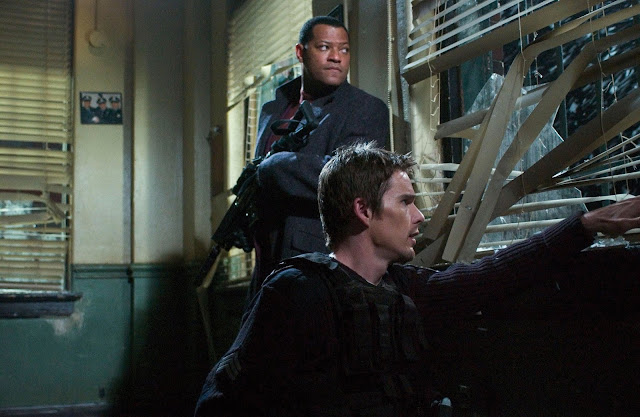Day by day, the “boys club” of Lionsgate continues to increase their output. What is this boys club? Why, it’s a cadre of actors who seem to be making a large part of their living by appearing in quiet Lionsgate releases destined for the VOD and DTV market. If there were a President of this club, it would be Bruce Willis. Nicolas Cage would be Vice President. And John Cusack seems to be gunning for a seat at the table.
Shaking loose of the generally underwhelming and tepid thrillers that these actors tend to grasp onto, Blood Money is actually fairly well made and pretty entertaining, stressing characterization as much as plot machinations. This comes courtesy of Lucky McKee, the cult director whose career so far consists of mostly horror titles, including May, his debut and still most celebrated of his career. In my write-up, 20 Alternative Films for Halloween Night, where I covered his second film, The Woods, I’d wondered just what in the world McKee had been up to. And now I know: directing John Cusack thrillers.
And speaking of, John Cusack is a lot of fun in this, trying on a villainous role (which he’s done before), but playing his character as a guy entirely new to crime and sort of recognizing along the way that he’s in over his head. His Miller is an underachiever; someone lazy, uninspired, and not that disciplined, and he derives a lot of unexpected comedy that somehow works. As he frantically fires bullets into the woods at our terrorized kids, he actually apologizes — and you can tell he means it. It’s a little bizarre, but Cusack makes it work, and it honestly makes you like his character, even if you probably shouldn’t.
Helping that conflicted take on his character is the extreme unlikability of another character: Lynne, as played by Willa Fitzgerald. You’ll never encounter a more unlikeable character who is still supposed to be a “good guy” in cinema — ever. Of that I’m confident. Early on she reveals her ruthlessness and selfishness, and from then on it only gets worse. (At one point, even Cusack’s villainous Miller says to her, “You are just a terrible, terrible person,” which is not just the best laugh-line in the movie, but one that puts her entire character in the audience’s crosshairs: I mean, if the villain thinks she’s terrible…) She transitions into such a cold and unfeeling person that the more her two male friends, both of whom are smitten with her, follow along, the more you begin to wonder if McKee and screenwriters Jared Butler and Lars Norbergare are making Blood Money less about an easy payday and more a statement on the utter spinelessness of men and the abuse they’re willing to suffer in the presence of a pretty face. (One of these spineless men is Ellar Coltrane, whose acting has only marginally improved since his appearance in Richard Linklater’s Boyhood.)
Blood Money is worth a one-time viewing, if for no other reason than to witness Cusack’s odd and at times hilarious villain and some nice directorial flourishes by McKee. Otherwise, it’s a fairly ho-hum thriller with an ending that will leave you extremely aggravated.



































